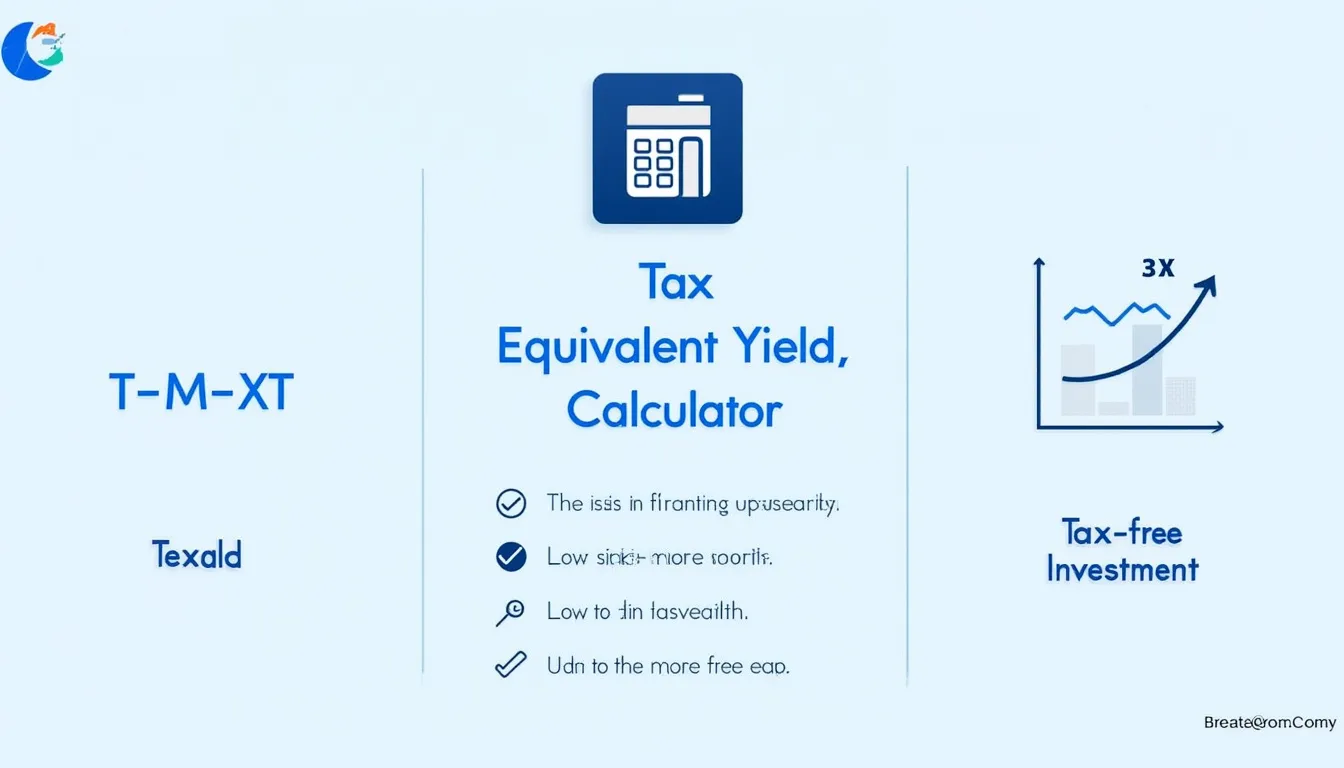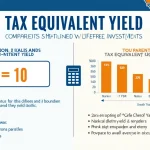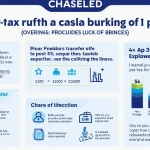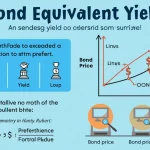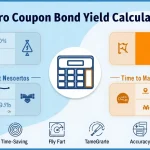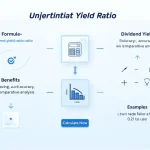Tax Equivalent Yield Calculator
Is this tool helpful?
Welcome to our comprehensive Tax Equivalent Yield Calculator, a powerful tool designed to help investors make informed decisions about their fixed-income investments. This calculator allows you to compare the yields of taxable and tax-free investments, ensuring you maximize your after-tax returns.
How to Use the Tax Equivalent Yield Calculator Effectively
Using our Tax Equivalent Yield Calculator is straightforward and user-friendly. Follow these simple steps to get the most out of this tool:
- Enter the Tax-Free Yield: Input the yield of your tax-free investment as a percentage. For example, if you have a municipal bond yielding 3.5%, enter 3.5 in the “Tax-Free Yield (%)” field.
- Input Your Tax Rate: Enter your marginal tax rate as a percentage. This is the highest tax bracket you fall into. For instance, if you’re in the 25% tax bracket, enter 25 in the “Tax Rate (%)” field.
- Calculate: Click the “Calculate” button to determine the tax equivalent yield.
- Review Results: The calculator will display the Tax Equivalent Yield, showing you what a taxable investment would need to yield to match your tax-free investment’s return after taxes.
Remember, all inputs should be in percentage form, ranging from 0 to 100.
Understanding Tax Equivalent Yield: Definition, Purpose, and Benefits
Tax Equivalent Yield (TEY) is a crucial concept for investors looking to compare the returns of taxable and tax-free investments. It represents the pre-tax yield that a taxable bond needs to possess to equal the yield of a tax-free municipal bond.
The Purpose of Tax Equivalent Yield
The primary purpose of calculating the Tax Equivalent Yield is to provide a fair comparison between taxable and tax-free investments. This comparison is essential because the actual value of a tax-free investment can be higher than its stated yield, especially for investors in higher tax brackets.
Benefits of Understanding Tax Equivalent Yield
- Accurate Investment Comparisons: TEY allows investors to make apples-to-apples comparisons between different types of investments.
- Optimized Portfolio Allocation: By understanding TEY, investors can better allocate their assets between taxable and tax-free investments.
- Maximized After-Tax Returns: TEY helps investors choose investments that offer the highest after-tax returns based on their specific tax situation.
- Informed Decision-Making: It provides a clearer picture of an investment’s true value, considering the investor’s tax circumstances.
The Mathematics Behind Tax Equivalent Yield
The Tax Equivalent Yield is calculated using the following formula:
$$ \text{Tax Equivalent Yield} = \frac{\text{Tax-Free Yield}}{(1 – \text{Tax Rate})} $$Where:
- Tax-Free Yield is the yield of the tax-exempt investment (expressed as a decimal)
- Tax Rate is the investor’s marginal tax rate (expressed as a decimal)
This formula effectively “grosses up” the tax-free yield to account for the tax savings, allowing for a direct comparison with taxable investments.
Benefits of Using the Tax Equivalent Yield Calculator
Our Tax Equivalent Yield Calculator offers numerous advantages for investors of all levels:
1. Time-Saving Efficiency
Manual calculations can be time-consuming and prone to errors. Our calculator performs complex calculations instantly, saving you valuable time and ensuring accuracy.
2. Personalized Results
By inputting your specific tax rate, you receive results tailored to your unique financial situation, enabling more informed decision-making.
3. Easy Comparison of Multiple Scenarios
Quickly compare different investment options by adjusting the tax-free yield or tax rate inputs, allowing you to explore various investment scenarios effortlessly.
4. Enhanced Investment Strategy
Understanding the tax equivalent yield helps you develop a more sophisticated investment strategy that considers both pre-tax and after-tax returns.
5. Educational Tool
For novice investors, this calculator serves as an educational tool, helping to demystify the concept of tax equivalent yield and its importance in investment decision-making.
Addressing User Needs: How the Tax Equivalent Yield Calculator Solves Specific Problems
Our Tax Equivalent Yield Calculator addresses several key challenges faced by investors:
1. Comparing Dissimilar Investments
One of the primary difficulties investors face is comparing taxable and tax-free investments. Our calculator bridges this gap by providing a standardized measure for comparison.
2. Accounting for Tax Implications
Many investors struggle to accurately account for the impact of taxes on their investment returns. This calculator automatically factors in tax considerations, providing a clearer picture of real returns.
3. Optimizing Investment Choices
By clearly showing the equivalent taxable yield, our calculator helps investors make optimal choices between taxable and tax-free investments based on their specific tax situation.
4. Simplifying Complex Calculations
The mathematics behind tax equivalent yield can be complex, especially when considering various tax rates and yields. Our calculator simplifies this process, making it accessible to all investors.
5. Facilitating Quick Decision-Making
In fast-moving markets, quick decisions are often necessary. This calculator provides instant results, enabling rapid, informed investment choices.
Practical Applications: Examples and Use Cases
To illustrate the practical utility of our Tax Equivalent Yield Calculator, let’s explore some real-world scenarios:
Example 1: Comparing Municipal and Corporate Bonds
Suppose you’re considering two investment options:
- A tax-free municipal bond yielding 3.5%
- A taxable corporate bond yielding 5%
If you’re in the 25% tax bracket, you might wonder which option provides a better after-tax return. Using our calculator:
- Enter 3.5 for the Tax-Free Yield
- Enter 25 for the Tax Rate
- Click Calculate
The result shows a Tax Equivalent Yield of 4.67%. This means that for an investor in the 25% tax bracket, a taxable investment would need to yield 4.67% to match the 3.5% tax-free yield. In this case, the 5% corporate bond would still provide a higher after-tax return.
Example 2: High Tax Bracket Investor
Consider an investor in a high tax bracket of 37% evaluating a tax-free bond yielding 4%:
- Enter 4 for the Tax-Free Yield
- Enter 37 for the Tax Rate
- Click Calculate
The calculator returns a Tax Equivalent Yield of 6.35%. This illustrates how valuable tax-free investments can be for high-income investors, as a taxable investment would need to yield 6.35% to match the 4% tax-free yield.
Example 3: Evaluating Different Tax Brackets
Let’s examine how the same tax-free investment looks for investors in different tax brackets. Consider a municipal bond yielding 3%:
- For a 22% tax bracket: TEY = 3.85%
- For a 32% tax bracket: TEY = 4.41%
- For a 37% tax bracket: TEY = 4.76%
This comparison demonstrates how the value of tax-free investments increases for those in higher tax brackets.
Frequently Asked Questions (FAQ)
1. What is Tax Equivalent Yield?
Tax Equivalent Yield (TEY) is the pre-tax yield that a taxable bond must offer to equal the yield of a tax-free bond. It allows for a fair comparison between taxable and tax-free investments.
2. Why is Tax Equivalent Yield important?
TEY is crucial because it helps investors compare different types of investments on an equal footing, considering their tax implications. This leads to more informed investment decisions and potentially higher after-tax returns.
3. How accurate is this Tax Equivalent Yield Calculator?
Our calculator uses the standard formula for Tax Equivalent Yield and provides accurate results based on the inputs provided. However, it’s important to note that real-world investment decisions should consider additional factors beyond TEY.
4. Can I use this calculator for any type of investment?
This calculator is primarily designed for comparing fixed-income investments like bonds. It’s most useful when comparing taxable and tax-free bond yields.
5. Does the calculator account for state and local taxes?
No, this calculator only considers federal income tax rates. For a more comprehensive analysis, you may need to factor in state and local taxes separately.
6. How often should I recalculate the Tax Equivalent Yield?
It’s advisable to recalculate TEY whenever your tax situation changes, or when considering new investment opportunities. Regular recalculation ensures your investment strategy remains optimized for your current circumstances.
7. Can the Tax Equivalent Yield be negative?
No, the Tax Equivalent Yield cannot be negative. If you enter valid positive values for the tax-free yield and tax rate, the result will always be positive.
8. Is a higher Tax Equivalent Yield always better?
While a higher TEY generally indicates a better return relative to your tax situation, it’s important to consider other factors such as risk, liquidity, and overall portfolio strategy when making investment decisions.
9. How does inflation affect Tax Equivalent Yield?
The Tax Equivalent Yield calculation doesn’t directly account for inflation. To consider the real return on your investment, you would need to subtract the inflation rate from the TEY.
10. Can I use this calculator for international investments?
This calculator is primarily designed for U.S. investments and tax rates. For international investments, you may need to consider additional factors such as foreign tax credits and currency exchange rates.
Please note that while we strive for accuracy, we cannot guarantee that the webtool or results from our webtool are always correct, complete, or reliable. Our content and tools might have mistakes, biases, or inconsistencies. Always consult with a qualified financial advisor or tax professional for personalized advice.
Conclusion: Maximizing Your Investment Strategy with Tax Equivalent Yield
Understanding and utilizing Tax Equivalent Yield is a crucial step towards optimizing your investment strategy. Our Tax Equivalent Yield Calculator provides a powerful, user-friendly tool to help you make informed decisions about your fixed-income investments.
Key benefits of using this calculator include:
- Accurate comparison between taxable and tax-free investments
- Personalized results based on your specific tax situation
- Time-saving calculations for efficient decision-making
- Enhanced understanding of the true value of tax-free investments
- Improved ability to optimize your investment portfolio for after-tax returns
By leveraging the insights provided by our Tax Equivalent Yield Calculator, you can make more informed investment choices, potentially increasing your after-tax returns and advancing your financial goals.
We encourage you to use this calculator regularly as part of your investment strategy, especially when comparing different fixed-income options or when your tax situation changes. Remember, while Tax Equivalent Yield is a valuable metric, it should be considered alongside other factors such as risk tolerance, investment goals, and overall portfolio diversification.
Take control of your investment strategy today – use our Tax Equivalent Yield Calculator to unlock the full potential of your fixed-income investments!
Important Disclaimer
The calculations, results, and content provided by our tools are not guaranteed to be accurate, complete, or reliable. Users are responsible for verifying and interpreting the results. Our content and tools may contain errors, biases, or inconsistencies. We reserve the right to save inputs and outputs from our tools for the purposes of error debugging, bias identification, and performance improvement. External companies providing AI models used in our tools may also save and process data in accordance with their own policies. By using our tools, you consent to this data collection and processing. We reserve the right to limit the usage of our tools based on current usability factors. By using our tools, you acknowledge that you have read, understood, and agreed to this disclaimer. You accept the inherent risks and limitations associated with the use of our tools and services.
